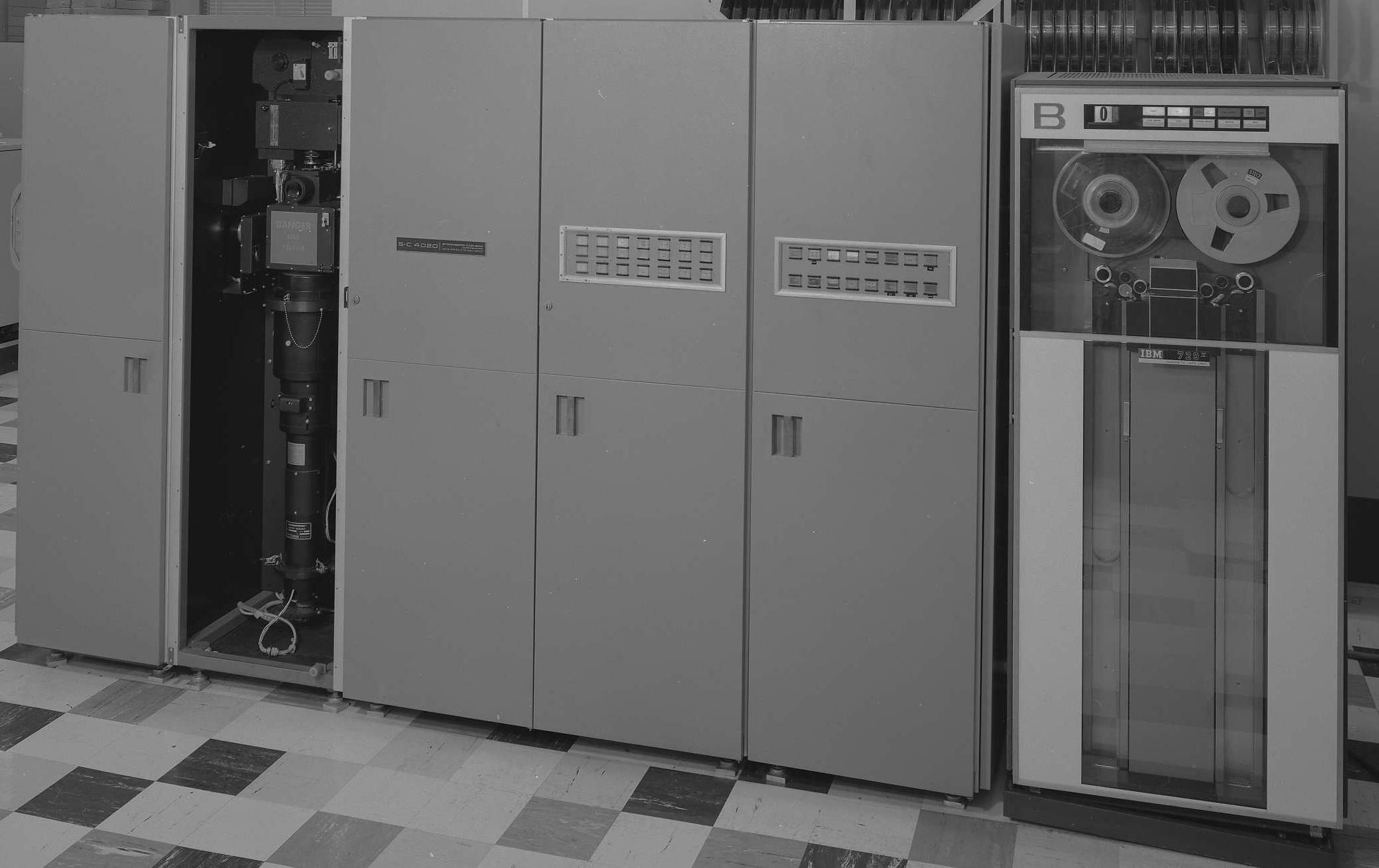By 1959, computers were becoming quite powerful. The IBM 704 was being replaced by the IBM 7090. In the UK, the Ferranti Mercury was in service and the Ferranti Atlas Computer was being developed. Graph plotters were becoming more reliable but still quite slow. Lineprinters were getting faster but still not coping with the demands for even greater amounts of printed output. The potential for using computers to generate animation was being discussed. Some Cathode Ray Tubes had been attached to computers but the resolution was low and the amount of information that could be refreshed to give a flicker-free image was also limiting.
In that climate, Stromberg-Carlson announced its new SC4020 microfilm recorder. The 12-minute film Mark of Man gave an idea of its capabilities.
Most of the major scientific laboratories purchased SC4020s:
- 1960: Bell Labs, Murray Hill, New Jersey
- 1960: Livermore Labs
- 1962: Los Alamos (still running in 1975). Worked closely with Sandia Labs. Purchased a second SC4020 later
- 1962: AWRE Aldermaston, also used by AERE Harwell, Atlas Computer Laboratory, and other government departments
- Boeing Corporation for aeronautic design who provided facilities for its partners
- Polytechnic Institute of Brooklyn, with a service to other US universities (University of Michigan, Johns Hopkins etc)
- MIT
- David Taylor Model Basin, Washington
- NASA
- IBM
- 1968: Atlas Computer Laboratory, who provided a service to AERE Harwell and UK universities (Aldermaston had replaced their SC4020 with an SC4060)
The complete list is unknown as many went to sensitive government sites. About 30 SC4020 sites existed early on.

SC4020
The SC4020 made computer animation possible even though its manufacturers had not envisaged that as a use!

